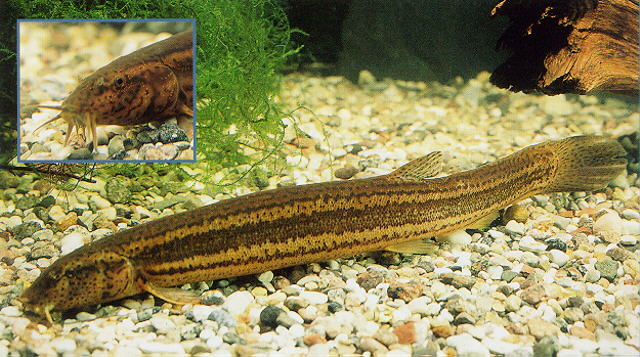Loach (scientific name: Misgurnus anguillicaudatus) is a fish widely distributed in freshwater waters. It has attracted widespread attention for its strong adaptability, fast growth and high nutritional value. Whether in natural environments or artificial breeding environments, understanding the diet of loach is crucial for its healthy growth. So, what do loaches like to eat? What are the characteristics of their food? How to feed loaches scientifically? This article will introduce in detail loach's diet, natural food, artificial feed and feeding management and other aspects.

Loach has a wide range of diets and is an omnivorous and animal-oriented fish, which means that they can eat both plant-based food and animal-based bait.
Young loaches prefer animal-based food, such as small plankton and insect larvae.
Adult loaches have a wider diet, eating humus and small aquatic animals, as well as algae and plant residues.
Loach mainly lives at the bottom of the water or in the mud, and its feeding method is quite unique:
Sharp sense of smell: Loach uses its developed sense of smell to find food, and can accurately locate the source of food even in turbid water.
Both swallowing and scraping: Loach will directly swallow plankton, and will also use its mouth to scrape algae and organic matter from the bottom of the water.
Nocturnal feeding: Loach hides during the day and actively forages at night, so feeding time is usually chosen in the evening or at night.
In the wild, loaches have a rich source of food, mainly including the following categories:
Loach prefers to eat high-protein food, especially when they are young and growing vigorously. Mainly include:
Zooplankton: microscopic organisms such as rotifers, cladocerans, and copepods.
Insect larvae: mosquito larvae (wrigglers), water fleas, water ants, etc.
Small aquatic invertebrates: water earthworms, aquatic mollusks (such as larvae of snails and shellfish).
Organic debris and humus: Loaches are good at scraping humus from the bottom of the water, which is rich in organic matter and microorganisms.
Although loach mainly consumes animal protein, it will also eat the following plant food when food is scarce:
Algae: filamentous algae, green algae, etc. in the water.
Aquatic plant fragments: such as duckweed, reeds, and straw residues.
Grains and crop residues: such as rice grains and bean fragments in rice fields, etc.
Loach has a unique benthic living habit, and humus and microorganisms in the mud are also important sources of nutrition for it.
Loach obtains nutrition from organic debris, microorganisms and bacteria in the mud by digging mud and drilling holes.
This feeding habit allows loach to survive in a low-nutrient environment and can play a role in purifying water quality.
In a breeding environment, in order to make loach grow quickly, a more nutritionally balanced feed is usually provided.
Water earthworms (red worms): rich in protein, one of the favorite foods of loach.
Silkworm pupa powder: high-protein feed, improves loach immunity.
Fish meal, shrimp meal: as an important raw material for compound feed, increase growth rate
Wheat bran, bean cake, rice bran: Commonly used in loach feed formula, can provide carbohydrates and trace nutrients.
Fermented feed: Fermented corn, bean dregs, etc., to improve the digestion and absorption rate of loach.
Currently, there are special loach pellet feed on the market, which usually contains protein, vitamins and minerals.
Artificial compound feed can meet the nutritional needs of loach in a more balanced manner and is suitable for large-scale breeding.
Feeding at night is best, because loach is active in foraging at night.
Spring and summer: Feed 2-3 times a day to promote rapid growth.
Autumn and winter season: Feed 1-2 times a day, and reduce the amount of feeding when the temperature is low.
Fixed-point feeding: Feed at a fixed location to reduce feed waste and improve feed utilization.
Small amounts and multiple times: Prevent water pollution caused by excessive feeding.
Observe the feeding situation of loach: If there is a lot of feed residue, the feeding amount should be reduced.
Water temperature is suitable (20-28℃). Low or high temperature will suppress appetite.
Water quality is clean. Deterioration of water quality will reduce food intake.
Bait type changes. Single bait is easy to cause appetite loss, so bait needs to be changed appropriately.
Loach is an omnivorous fish, mainly animal bait, supplemented by plant food, and has strong adaptability. Whether in the wild orIt is the breeding environment, and they can take in nutrients such as small aquatic animals, algae, humus to maintain growth. During the breeding process, scientific feeding of animal feed, plant feed and compound feed, and maintaining good water quality management can promote the healthy growth of loaches and increase breeding benefits.
animal tags: loach
We created this article in conjunction with AI technology, then made sure it was fact-checked and edited by a Animals Top editor.